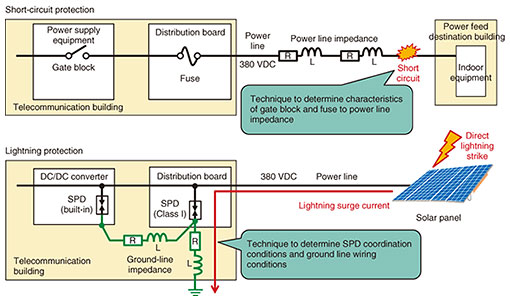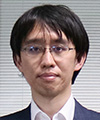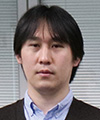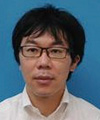 |
|||||||||||
|
|
|||||||||||
|
Feature Articles: Challenges of NTT Space Environment and Energy Laboratories toward Ultra-resilient Smart Cities Vol. 19, No. 6, pp. 22–29, June 2021. https://doi.org/10.53829/ntr202106fa3 Energy-distribution Platform Technologies toward Zero Environmental ImpactAbstractThe use of renewable energy has been increasing, but further adoption will require effective distribution of energy and energy resilience. The Energy Network Technology Group of NTT Space Environment and Energy Laboratories is researching and developing virtual energy demand/supply control technology to enable full use of renewable energy and next-generation energy-supply technology based on direct current microgrids to provide a stable supply of power to regional areas even if the supply of commercial power is interrupted. This article introduces these technologies. Keywords: virtual energy demand/supply control, DC microgrid, renewable energy 1. Introduction of renewable energy and disaster responseA growing sense of crisis with respect to resource depletion and global warming has been driving the introduction of renewable energy, but additional factors such as environmental, social and governance (ESG) investing*1 and use of renewable energy as a region’s main power supply are dramatically changing the situation surrounding energy. While high costs have historically made the widespread use of renewable energy difficult, national policies, such as feed-in tariffs, have dramatically lowered costs by promoting the introduction of large-scale renewable energy such as mega solar power plants and massive wind power generation. These policies have helped reduce price-related barriers to the introduction of renewable energy. Recent advances in investing and management with respect to the environment, such as ESG investment and the Task Force on Climate-related Financial Disclosures (TCFD)*2, have also become essential elements in corporate activities, and at the national level, initiatives toward the expanded use of renewable energy, such as its use as a country’s main power supply, have already become a matter of course. The amount of power generated from renewable energy fluctuates greatly with weather, so it will be difficult to balance the amount of power consumed the more that renewable energy will be used. There has been much effort in controlling demand, but there is still the need for a large-scale and high-speed means of absorbing such fluctuations. A large-scale power outage that occurred in September 2019 due to a direct hit by a typhoon in Chiba Prefecture followed by another large-scale power outage in the Tokyo metropolitan area due to the Fukushima Prefecture Offshore Earthquake in February 2021 have again raised awareness of the importance of a stable power supply. Resilience measures centered about the national government in Japan have consequently been promoted such as constructing backup systems at evacuation centers. However, when commercial power becomes unavailable, power from renewable energy cannot be transmitted, and there are concerns that the backup facilities will be difficult to maintain continuously. In addition to disasters that have already been experienced, it will be necessary to deal appropriately with new risks such as electromagnetic pulses (EMPs) and cosmic radiation accompanying the expanded use of electronic equipment. In this article, we introduce virtual energy demand/supply control and next-generation energy supply as technologies for solving these problems.
2. Virtual energy demand/supply control technologyA variety of measures are being taken to absorb large changes in the power generated from renewable energy. These include predicting the amount of power generated; adjusting the amount of power generated in conjunction with thermal power generation, pumped-storage hydropower, etc.; controlling the amount of power consumed by air conditioning, lighting, etc. on the consumer side; and storing surplus power in storage batteries. There have been recent developments in and introduction of new demand/supply control systems, such as virtual power plants that group and control many small-scale power generation facilities and multiple consumer devices much like a single electric power plant, and systems that use storage batteries in electric vehicles (EVs). However, if renewable energy in large quantities is introduced to a specific region, there is still the possibility that controlling power fluctuation at the time of a surplus or shortage will be quantitatively or temporally difficult in that region. There is therefore a need for large-scale and high-speed control of the amount of consumed power so that no surplus or shortage of power occurs in the power system of any region even for a moment. The NTT Group consumes approximately 1% of the power consumed in Japan, and since NTT telecommunication buildings and datacenters are scattered throughout the country, it has the potential of modifying power consumption between regions. This modification of consumed power can be achieved by controlling the volume of communication traffic and amount of information processing of computational data, etc. For example, information processing can be transferred from a telecommunication building in a region where rainfall has caused a drop in solar power generation and a shortage of power to a telecommunication building in a region where fine weather has resulted in a surplus of power. Therefore, the region with rainfall can lower power consumption and avoid tight supply/demand conditions while the region with fine weather can increase power consumption and make full use of the power generated by solar power generation. To achieve such a transfer of information processing across regions, the aim of our research and development efforts is to make the amount of information processing follow the amount of power generated from renewable energy, enhance tracking of the amount of information processing and the amount of power consumed by information and communication technology (ICT) equipment, and optimize the amount of information processing to transfer and the timing of such transfers to achieve a supply/demand balance in each region. To achieve such optimization, our research and development is also aimed at performing such control so as not to affect communication service quality and facility stability (Fig. 1). It must also be considered that a large number of storage batteries are installed in NTT telecommunication buildings as backup power supplies for communication services, so making use of these batteries as well as EV batteries at the right time in conjunction with EV operation information should make it easier to control the charging/discharging of even greater amounts of power.
As an initial step toward establishing the above technology, we constructed a container-type test bed at NTT Musashino R&D Center, installed a rectifier, solar array simulator, storage batteries, information processing servers, etc., and began testing energy demand/supply control (Fig. 2). The plan is to use this test bed to test demand/supply control with distant telecommunication buildings and datacenters.
3. Next-generation energy supply technologyVarious regions in Japan have been establishing resilience measures to reduce power supply interruptions brought on by disasters such as large-scale earthquakes. NTT is also promoting measures to strengthen the earthquake resistance of its buildings, defend against flooding, and fortify backup systems. However, in addition to extreme weather, it is thought that the risk of damage, interruption, or erroneous operation of electronic equipment and power supply equipment still exists due to, for example, EMP irradiation resulting from a high-altitude nuclear explosion attack or cosmic rays emitted during solar flares. Such events are considered rare, but taking into account the further miniaturization and integration of semiconductor devices from here on and the further spread of electronic equipment and devices, damage to systems involving the power supply can have dire consequences for society. To solve this problem, the Energy Network Technology Group has undertaken the development of an energy supply system that enables a stable power supply in the face of all types of events. The power supply system used in NTT telecommunication buildings had been a direct current (DC) system based on –48 VDC, but the recent increase in the power consumed by ICT equipment is prompting the introduction of a high voltage direct current (HVDC) power supply system that increases the voltage to 380 VDC. This HVDC power supply system (Fig. 3(b)) supplies DC power directly to ICT equipment that operates on DC, decreasing the number of conversion steps and reducing conversion loss compared with an alternating current (AC) power supply system (Fig. 3(a)). This makes for a high-efficiency system as well as an extremely reliable system since the storage battery used as backup is directly connected to the DC bus. We expect that this high-efficiency, high-reliability system can be used as a basis for constructing a DC microgrid that connects an NTT telecommunication building and local consumers to a 380 VDC network (Fig. 4). This would achieve a power supply system with efficient power interchange and no outages. In normal times, when a surplus amount of power is generated by renewable energy in the neighboring area, that power can be stored with good efficiency in storage batteries at the NTT telecommunication building (Fig. 4(a)). Furthermore, during a disaster or other abnormal occurrence, storage batteries for stationary use and those for EV use can be combined with renewable energy to enable power interchange even if the power supplied by a power company is interrupted (Fig. 4(b)). However, this DC microgrid has a configuration that connects multiple units of power-generating equipment and multiple consumers, which means that events, such as short circuits, grounding, and lightning, can have far-reaching effects. There is therefore a need for a stable power supply that is robust to even these types of events.
The Energy Network Technology Group is proceeding with a three-step study as shown in Fig. 5. Step 1 will involve connecting the supply side with the demand side in a one-to-one format, Step 2 will involve connecting multiple units of equipment and executing power interchange in a bidirectional format, and Step 3 will involve stabilizing the power supply by extending the DC microgrid in which the power is networked. In Step 1, which is now in progress, we are studying technology for connecting an NTT telecommunication building to an elementary or middle school acting as an evacuation center during a disaster in a one-to-one format (power supply distance: ≈ 400 m). Since we are extending 380 VDC power to an outdoor environment in this study, as shown in Fig. 6, we are giving priority to developing power quality technology involving electrical safety to prevent major accidents such as system fires or electric shock to workers. During a short circuit, the short circuit current decreases as the power supply distance from indoors to outdoors becomes longer, and since the current is DC, it is difficult to detect such an accident on the telecommunication-building side, which results in risk of failing to cut off the current safely. To solve this problem, we developed a mechanism that detects a short circuit with high accuracy and cuts off the current by incorporating an overcurrent protection function (gate block) inside DC power supply equipment in addition to the use of conventional fuses. Though a telecommunication building, in particular, requires high reliability, the risk of a penetrating lightning surge increases when a telecommunication building draws in power generated by a solar power generation system or other sources, so there is a need for technology for suppressing voltage. For this reason, we developed a technique that can significantly reduce the voltage accompanying a lightning surge by optimizing the wiring setup of surge protection devices (SPDs) and grounding wires. The provision of the above technologies is centered about NTT Anode Energy Corporation [1], which specializes in the energy business. It is currently expanding the testing of a backup power supply business in Chiba City [2].
On the basis of these technologies, we are also addressing the additional risks of EMP and cosmic radiation. In an AC system, the occurrence of such phenomena can lead to software errors in the control system that executes synchronization control,*3 increasing the risk of an interrupted power supply due to poor synchronization. A DC system, in contrast, directly connects the storage batteries to the DC bus, which lowers this risk. We will make maximum use of this feature of DC systems to establish a system that is robust to a variety of risk events that could otherwise interrupt the power supply.
4. Future developmentsWe will work to further develop the two technologies introduced in this article and take up the challenge of researching and developing a new network system that merges the information and energy networks. To this end, we will link these technologies to the All-Photonics Network in the Innovative Optical and Wireless Network (IOWN) proposed by NTT and disaggregated computing for high-speed and high-efficiency data processing through decentralized coordination of diverse, geographically distributed computing devices in accordance with the application. We will also improve the quality of the DC-microgrid power network through optical-type high-speed cutoff devices and work to integrate renewable energy and computing devices. By migrating from the existing centrally managed energy network system to a new energy network system based on autonomous and decentralized cooperative control, we plan to contribute to the implementation of local production for local consumption that makes full and efficient use of renewable energy and to the creation of ultra-resilient smart cities that can supply power without interruption despite the occurrence of a variety of events. References
|
|||||||||||























